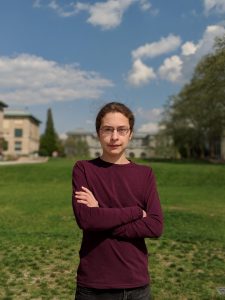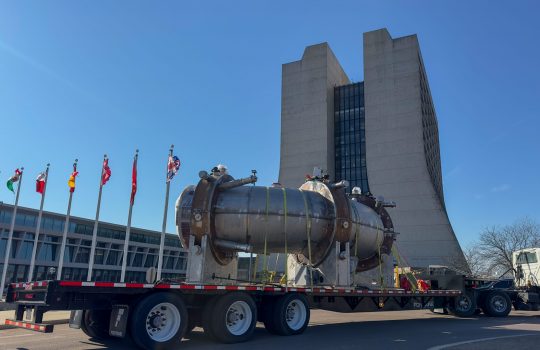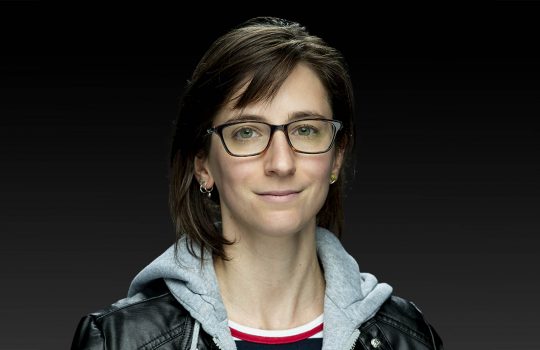The Dark Energy Survey captures images of galaxies billions of light-years away to help our understanding of the evolution of the cosmos. Assessing these galaxies’ properties, such as their size, shape and distance from each other, is a painstaking process, one that involves not only collecting massive amounts of data, but also correcting for potential miscues that challenge the very act of assessing the data.
The Fermilab-led Dark Energy Survey aims to make unprecedented measurements of a phenomenon known as gravitational lensing. Gravity bends light produced by faraway galaxies, so images of galaxies are subtly distorted by the time they reach Earth. The degree of distortion itself can provide information about those galaxies, galaxy clusters and the universe around them. An important step in making accurate measurements of the universe is by successfully isolating these tiny distortions.
Simon Samuroff is the recipient of the 2017 URA Thesis Award, presented annually for outstanding work by a graduate student working at or in collaboration with Fermilab. In his thesis, titled “Systematic Biases in Weak Lensing Cosmology with the Dark Energy Survey,” Samuroff built computer simulations to model the shapes of galaxies captured by the Dark Energy Camera, which was built by Fermilab and is located at an observatory on a Chilean mountaintop. He closely compared thousands of the simulations to actual images to determine the amount by which scientists’ initial estimates of these distortions are incorrect. He singled out miscues so the Dark Energy Camera could make improved measurements and be more sensitive to subtle effects of phenomena such as dark matter.
“The committee was impressed by both the quality of writing and the magnitude of his study — cataloging millions of galaxies or clusters and taking very small effects into account,” said Fermilab scientist Lenny Spiegel, chair of the URA Thesis Award Committee. “His work is invaluable to scientists studying mysteries regarding astrophysics, which may ultimately point the direction for future progress in particle physics.”
One of Samuroff’s major results showed that interactions between the images of neighboring galaxies that overlapped affected scientists’ measurements more severely than they realized. By identifying where and to what degree distortions like this cause inaccuracies, Samuroff helps scientists create a more reliable system of measurement.
His final product is one of two catalogs based on the first year of DES data. The catalogs contain painstaking measurements of the size, shape and relative distance of over 20 million galaxies, calibrated and tested according to Samuroff’s simulated images. Applying methods described in his thesis enables scientists to account for the skew created by specific types of image distortions — some of which introduce extra stretching of galaxies’ apparent shapes by as little as 1 percent. But when the distance is measured in light-years, galaxies produce a minuscule cosmic signal, and a 1 percent error is not to be ignored. Scientists have already begun referencing his catalog and will continue to use it in the future, improving their image analysis methods to make cosmological discoveries.
“Samuroff’s thesis is a truly outstanding example of the original and innovative research of a young physicist, enabled by Fermilab, honored by the URA Thesis Award,” said URA Executive Director Marta Cehelsky.
Scientists measure remote galaxies to better understand dark energy, which is the suspected force behind the accelerated expansion of the universe. One of the biggest mysteries in cosmology today is where the extra energy driving the expansion comes from, or indeed whether it could hint at flaws in our theories of gravity. Cosmologists are also working to pin down the nature of dark matter, which is detected through its influence on the velocity and light of galaxies. If scientists can measure the large-scale properties of dark matter, they can open new doors into even more perplexing natural phenomena, such as the reason the Higgs boson’s mass is so much smaller than predicted, a discovery that could uncover new areas of physics.




